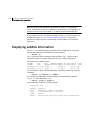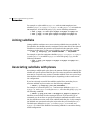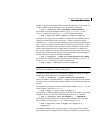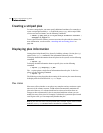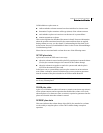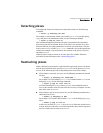
224 Creating and administering plexes
Creating a striped plex
Creating a striped plex
To create a striped plex, you must specify additional attributes. For example, to
create a striped plex named pl-01 in the disk group, mydg, with a stripe width
of 32 sectors and 2 columns, use the following command:
# vxmake -g mydg plex pl-01 layout=stripe stwidth=32 ncolumn=2 \
sd=mydg01-01,mydg02-01
To use a plex to build a volume, you must associate the plex with the volume. For
more information, see the section, “Attaching and associating plexes” on
page 229.
Displaying plex information
Listing plexes helps identify free plexes for building volumes. Use the plex (–p)
option to the
vxprint command to list information about all plexes.
To display detailed information about all plexes in the system, use the following
command:
# vxprint -lp
To display detailed information about a specific plex, use the following
command:
# vxprint [-g diskgroup] -l plex
The -t option prints a single line of information about the plex. To list free
plexes, use the following command:
# vxprint -pt
The following section describes the meaning of the various plex states that may
be displayed in the STATE field of
vxprint output.
Plex states
Plex states reflect whether or not plexes are complete and are consistent copies
(mirrors) of the volume contents. VxVM utilities automatically maintain the
plex state. However, if a volume should not be written to because there are
changes to that volume and if a plex is associated with that volume, you can
modify the state of the plex. For example, if a disk with a particular plex located
on it begins to fail, you can temporarily disable that plex.
Note: A plex does not have to be associated with a volume. A plex can be created
with the vxmake plex command and be attached to a volume later.



